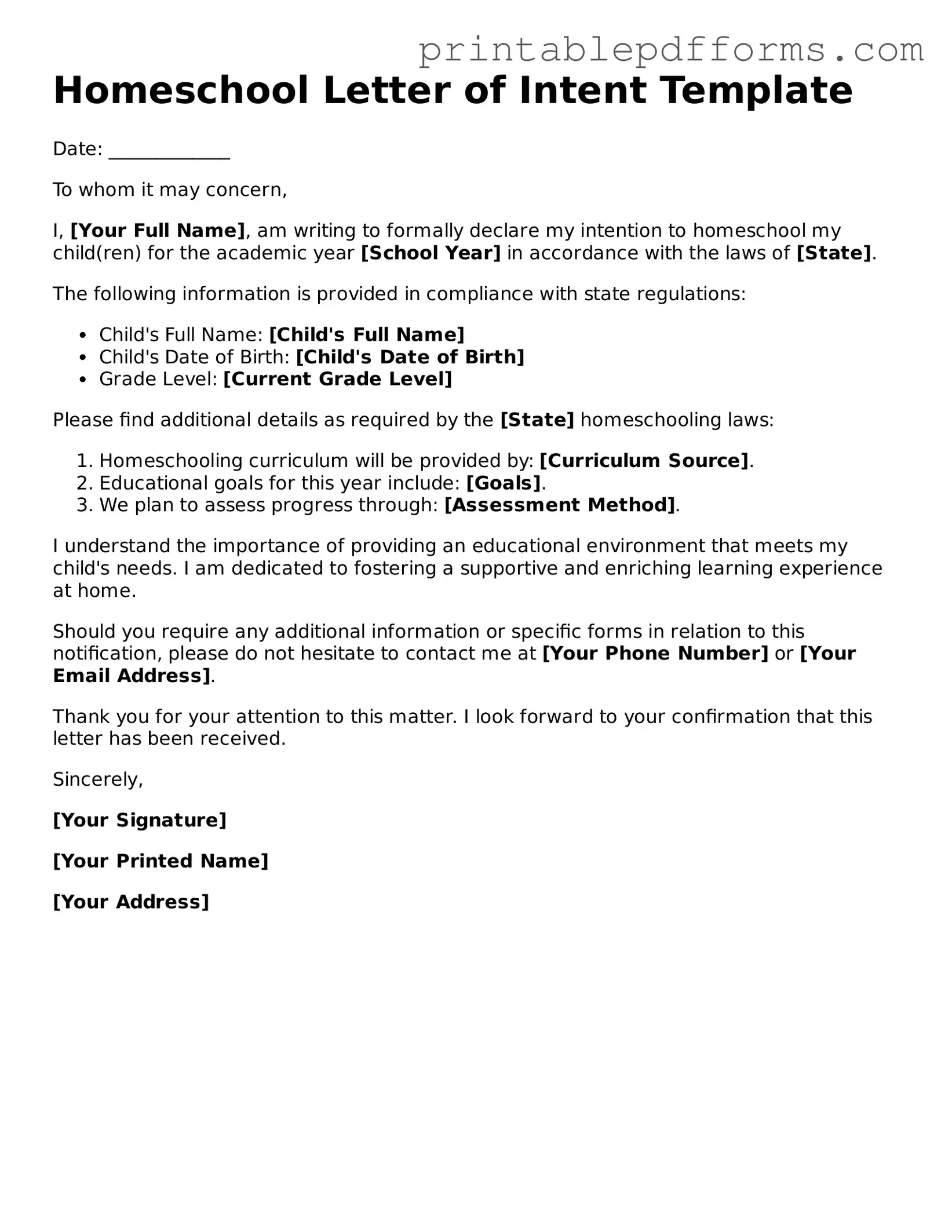Homeschool Letter of Intent Template
Date: _____________
To whom it may concern,
I, [Your Full Name], am writing to formally declare my intention to homeschool my child(ren) for the academic year [School Year] in accordance with the laws of [State].
The following information is provided in compliance with state regulations:
- Child's Full Name: [Child's Full Name]
- Child's Date of Birth: [Child's Date of Birth]
- Grade Level: [Current Grade Level]
Please find additional details as required by the [State] homeschooling laws:
- Homeschooling curriculum will be provided by: [Curriculum Source].
- Educational goals for this year include: [Goals].
- We plan to assess progress through: [Assessment Method].
I understand the importance of providing an educational environment that meets my child's needs. I am dedicated to fostering a supportive and enriching learning experience at home.
Should you require any additional information or specific forms in relation to this notification, please do not hesitate to contact me at [Your Phone Number] or [Your Email Address].
Thank you for your attention to this matter. I look forward to your confirmation that this letter has been received.
Sincerely,
[Your Signature]
[Your Printed Name]
[Your Address]
